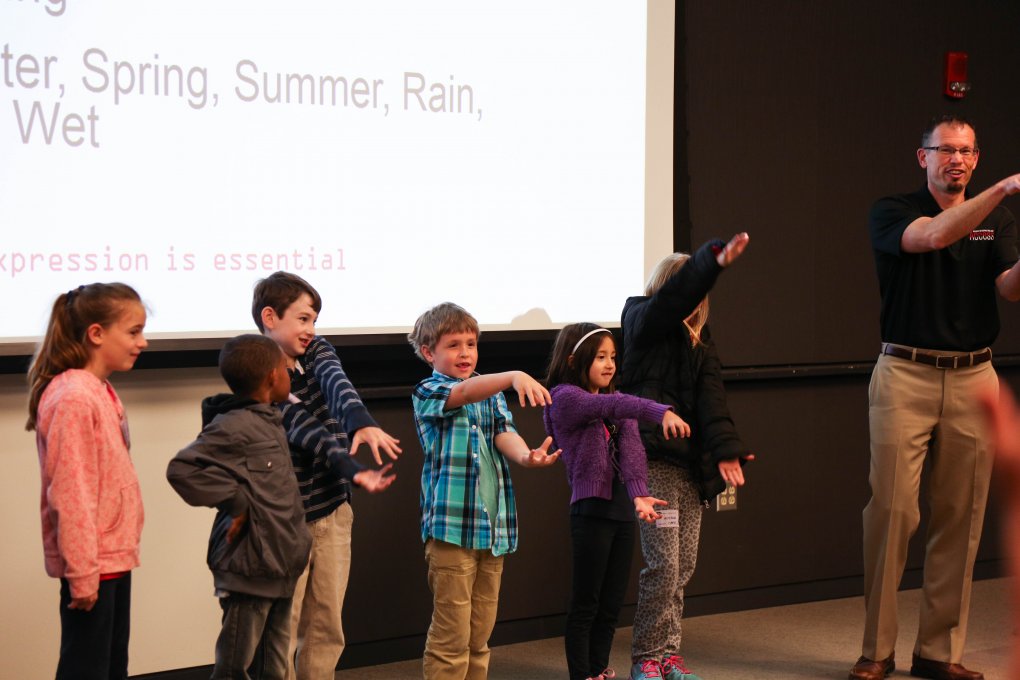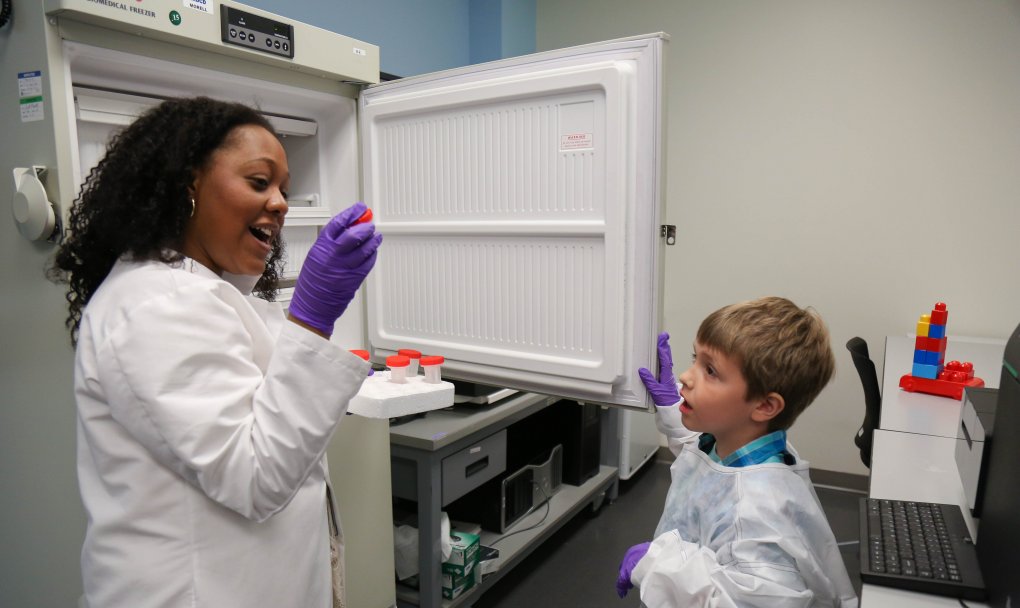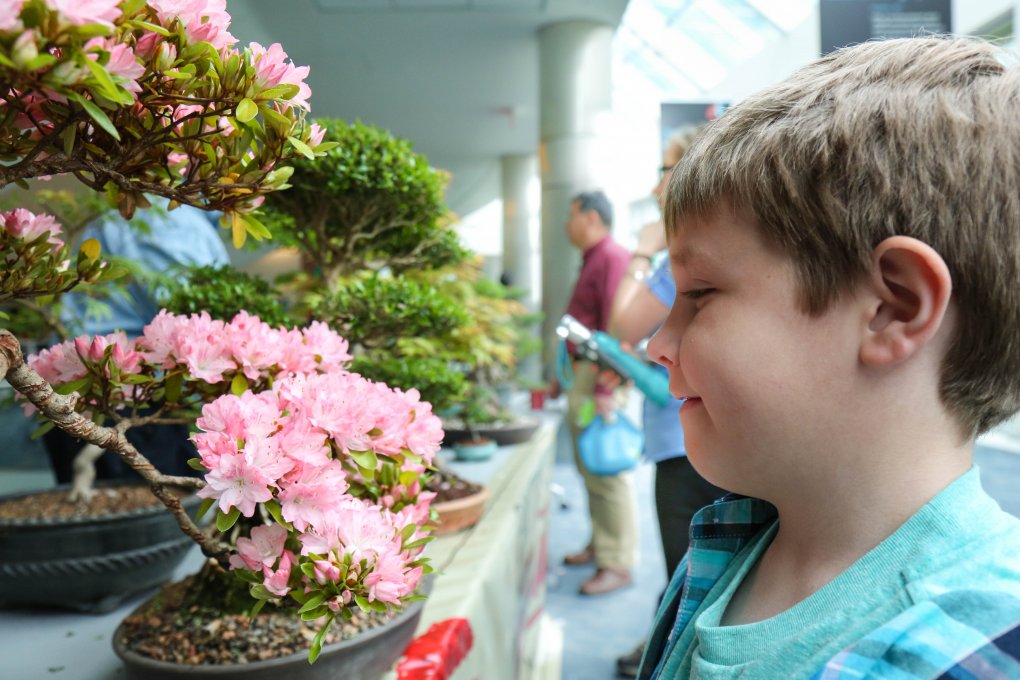Fun with Science and Grownups at NIH
The following story was told to IRP Staff Blogger by 7-year old James, who joined us at this year’s Take Your Child to Work Day event. We’ve done a bit of editing for clarity—but, rest assured, the train of thought is all James’.
Hi, my name is James. I’ve always really liked science and I want to be a scientist when I grow up, but I never got to see where scientists work until I went to Take Your Child to Work Day at NIH with my Auntie Kit. It was awesome!
We started at the NIH’s National Institute of Arthritis and Musculoskeletal and Skin Diseases (NIAMS). The volunteers used stuff like balloons and a life-size skeleton named Mr. Bones to show how our bones, muscles, and skin work. They talked about ways to protect our skin during the summer, like using sunscreen with a higher sun protection factor (SPF) so you can stay outside longer and not get burnt. And we learned about how ticks can give you something bad called Lyme disease. You have to check your clothes for them and help your friends check their clothes, too.

Real ticks are slightly harder to spot than this larger-than-life model.
Then we went to the National Institute on Deafness and Communication Disorders (NIDCD). We learned about the Deaf community from a Deaf person named David. David talked to us using American Sign Language (ASL) and an interpreter who translated. I learned a lot about what it’s like to be Deaf and how to sign the alphabet in ASL, and some other signs like “sorry” and “thank you”. We also learned how to sign names of animals.
The ASL alphabet is really easy to learn. I’ve been showing it to my friends and my little brother. It’s good to learn stuff like sign language so that if you have Deaf friends, you can play with them and talk to them and understand what they’re saying.

This is how you say crocodile in American Sign Language- pretend your arms are chomping gator jaws!
My favorite part of the day was visiting Keri Richards in her lab at NIDCD. She is a bioinformatician. She studies DNA by putting samples of it in DNA sequencer machines. The DNA samples can come from spit, hair, and fingernails—I thought that was gross, but also kind of cool.
Ms. Richards used big Legos to show what happens to the DNA when it gets sequenced inside the machines. Being able to sequence DNA lets scientists study diseases so they can help people, and it helps them look for genes that tell us how and why people taste things the way they do.
Ms. Richards also brought out some dry ice in a bucket. Dry ice is even colder than snow, so scientists use it to keep DNA samples cold. We poured warm water into the bucket, and it caused carbon bubbles that made the dry ice look really fizzy like soda as it melted. The carbon bubbles also made a lot of smoke—it looked spooky!

Ms. Keri Richards showed me how DNA samples are stored until being sequenced.
We also saw bonsai trees at the NIH Earth Day celebration and 3D printers at the NIH Library. People asked me if I liked NIH, and I said I’d definitely be back next year.

So that’s what a plastic brain looks like. 3D printers are so cool!

I found my favorite bonsai tree at the NIH Earth Day celebration.
The last thing we saw was a presentation from Dr. Marcus Chen at the NIH Clinical Center. Dr. Chen is a scientist at the National Heart, Lung and Blood Institute (NHLBI). He showed us images that were made with X-rays, CT (computed tomography), and ultrasound. These let you look at your skeleton, your heart, and other stuff in your body.
Afterwards, I asked Dr. Chen about heart attacks, and he explained that heart attacks happen when fluids around your heart stop blood from reaching it. He said we could help prevent heart attacks by eating healthy food like vegetables, fruits, and whole grains. He also recommended getting exercise. I told him that I play baseball and sometimes do workout videos with Auntie Kit. He said those were both good ways to exercise.

Meeting Dr. Chen after his talk about body imaging was fun. He told me that baseball is exercise that will help keep my heart healthy.
I loved NIH. People at NIH do a lot of important work, like studying the Zika virus and rare diseases, and I really liked seeing where they do it. I can’t wait to go back next year!
Related Blog Posts
This page was last updated on Tuesday, February 13, 2024
